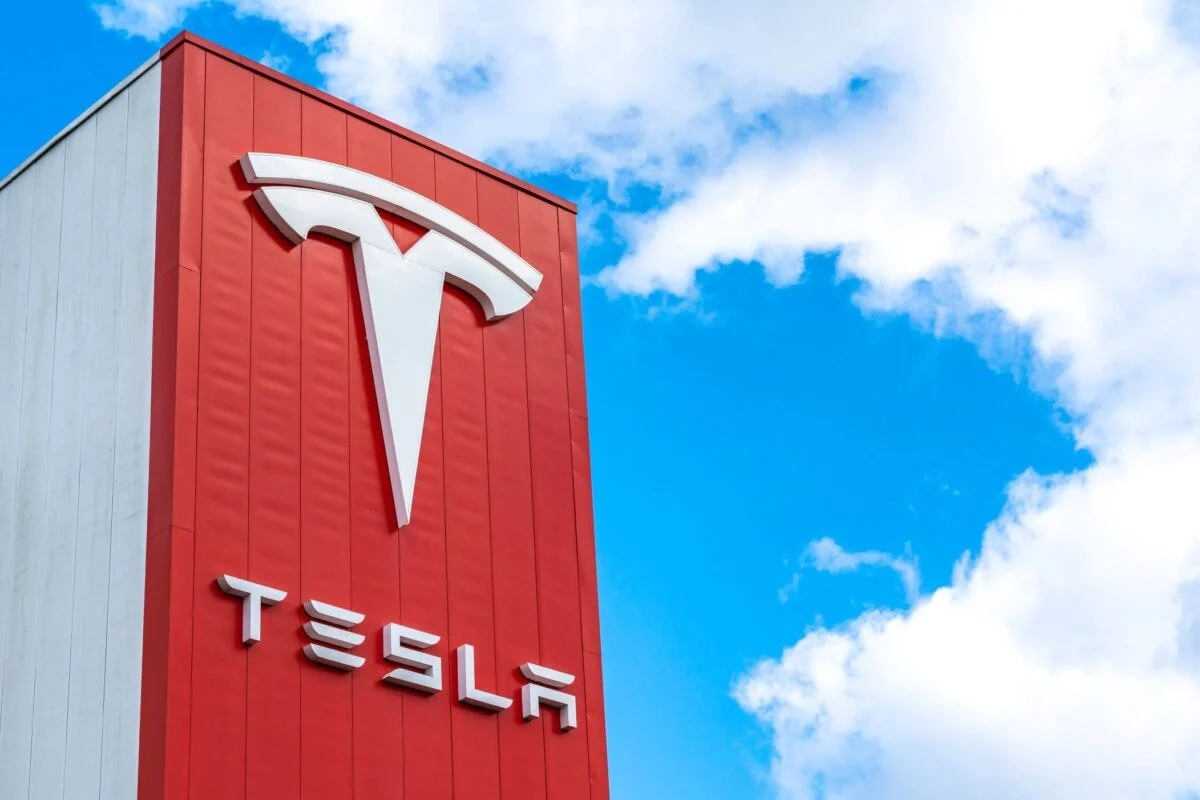TLDR
- Tesla’s 1.5% stock gain to $345.05 puts shares within striking distance of key $350 resistance level after three consecutive positive sessions
- Company’s Model Y SUV sales dropped 24% year-to-date while Model 3 sedan sales jumped 38%, showing mixed performance across vehicle lineup
- Automaker margins compressed from 14.6% in Q2 2022 to 4.1% in Q2 2025 as competitors enter market with loss-making vehicles
- Musk promotes FSD Version 14 as safer than human drivers with Version 15 expected to deliver major capability improvements
- Tesla cuts lease rates up to 40% in UK and Europe while Model Y wait times extend to 4-6 weeks in China market
Tesla shares climbed 1.5% to $345.05 on Monday as investors showed renewed confidence in the electric vehicle maker’s autonomous driving progress. The stock has posted three consecutive gains and now approaches a critical technical breakout point.

The rally brings Tesla within reach of the $350 resistance level that has capped gains for two weeks. A sustained break above this ceiling could trigger momentum buying toward $368 and potentially $390 in the near term.
Tesla’s recent performance reflects a tale of two models in its vehicle lineup. The Model Y SUV, the company’s best-selling vehicle, saw sales plummet 24% year-to-date through mid-July compared to 2024. Meanwhile, the Model 3 sedan posted a robust 38% increase over the same period.
The divergent performance points to competitive pressure rather than anti-Musk sentiment affecting the entire brand. New entrants including Chevrolet’s Blazer and Equinox, Nissan’s Ariya, Hyundai’s Ionic 5, and Honda’s Prologue have gained market share in the SUV segment.
These competitors are building vehicles at a loss to establish market presence. General Motors achieved “variable profit positive” status on EVs in Q4, meaning revenue covers labor and materials but not research, development, or capital investments.
Margins Under Pressure as Competition Intensifies
Tesla’s operating margins have compressed dramatically as the competitive landscape shifts. The company’s automotive operating margin fell from 14.6% in Q2 2022 to just 4.1% in Q2 2025.
Automotive revenue declined 7% in Q2 2024 and dropped another 16% in Q2 2025. The pressure has forced Tesla to plan a lower-cost Model Y variant that Musk describes as “just a Model Y.”
High interest rates have compounded the challenge by making vehicle financing more expensive. Tesla’s cheapest model, the Model 3, has outperformed while the pricier Model Y struggles.
The company has responded with aggressive pricing moves in international markets. Tesla slashed lease rates up to 40% in the UK and parts of Europe, with Model 3 leases now starting at £252 per month and Model Y at £377-400.
FSD Progress Drives Investor Optimism
Musk’s aggressive timeline for Full Self-Driving capabilities remains a key bullish catalyst for investors. The CEO recently emphasized that FSD Version 14 demonstrates safety levels superior to human drivers.
Version 15 is expected to deliver what Musk calls “an order of magnitude” improvement in capabilities. An initial robotaxi pilot program running in Austin, Texas, serves as a testing ground for broader deployment.
The robotaxi business model could transform Tesla’s economics by maximizing the utilization of electric vehicles. EVs carry high upfront costs but offer low operating and maintenance expenses, making them ideal for high-utilization scenarios.
Tesla maintains strong demand in China despite regional economic headwinds and price competition from local players like BYD and XPeng. Model Y wait times have stretched to 4-6 weeks, indicating healthy demand even with reduced incentives.

From a technical perspective, Tesla stock sits above its 50-day moving average near $320 and well clear of its 100-day average around $310. The Relative Strength Index stands just below 65, suggesting positive momentum without overbought conditions.
Recent trading volume has exceeded 30-day averages on up days, indicating institutional interest as macro risks diminish. The stock has formed a higher low and higher high pattern since April lows near $220.
Tesla shares reduced UK and European lease rates up to 40% while China operations show Model Y wait times extending to 4-6 weeks despite reduced incentives.


